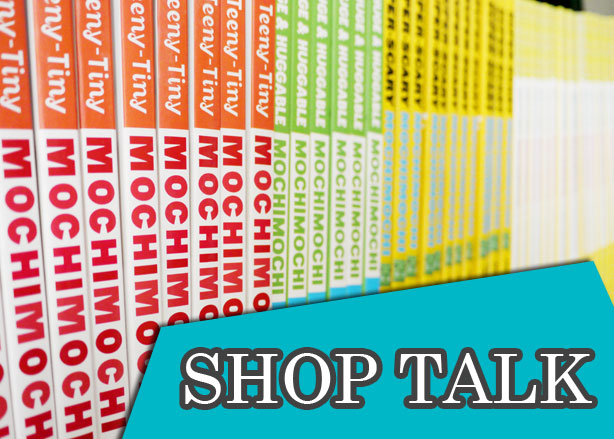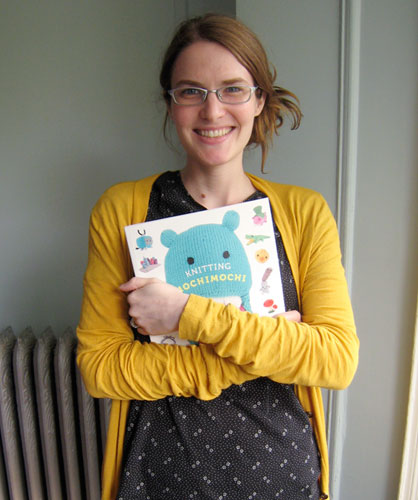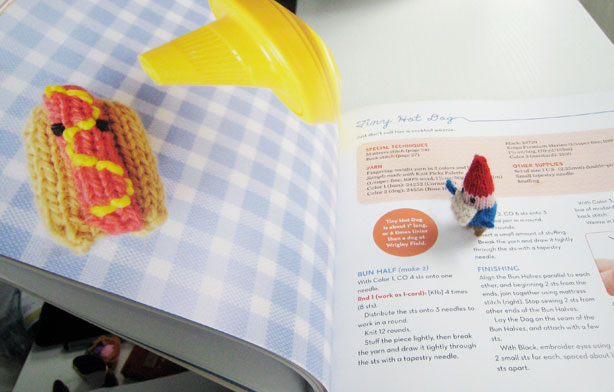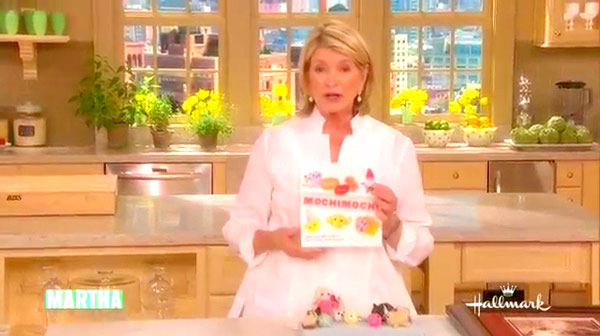I wanted to thank you all for the supportive comments you left on my post from last Friday. You guys are the BEST. To try to get rid of the blahs I took a couple of actual days off from work over the weekend (a rarity for the self-employed), and just that made all the difference. And now I’m also far enough behind on projects that I don’t have a lot of choice but to get in gear, so things are busy—in a good way—again. It’s like the new year officially started for me this week. (Gung Hay Fat Choy!)

Today I’m going to talk books. Writing them has been a big part of my life in recent years—I’m working on my fifth right now, if you can believe it! Of course, writing a book is easier than it’s ever been with the self-publishing options that are available these days, and that can be a super way to go if you have an idea that you can’t wait to make happen. But my experience writing books has always involved working with a publisher, which means working with a team of professionals (editor, art director, designer, marketing team, and more) who bring experience and expertise, but who may have different ideas from me about the content and marketing of the book.
There’s definitely something legitimizing about getting a book published. After my first one came out, my parents stopped subtly asking me when I was going to get a “real job,” for one. But books don’t pay the bills for most designers. For me, they do a lot of things: they’re a fun opportunity to take my design work to a new level; they supplement my income; they open doors of opportunity; and there’s just something wonderful about having a professionally published book in my hands with my name on it. It never gets old!

I love talking with other authors (mostly other designers) about their experience with publishing. It’s different for everyone: some authors write a new book annually, and some try it once and say “never again.” For me, because there are so many changes happening in publishing, and because I already have my own business selling patterns independently, I like to reevaluate the situation every time before I send a proposal to my editor and before signing a new contract. Is this is the best way for these designs to go out into the world? I ask myself. You could argue that if I released all of the patterns from a book individually as PDFs, I might actually make more money off of the designs, since I would be getting $5 or $6 each time someone purchased a pattern, instead of about $1 each time someone purchased a copy of my book. But I know that working with my publisher means that my books will reach thousands of people who would never have otherwise found my website. They even reach people in languages that I couldn’t. (Yes, I could hire translators for my patterns, but then I’d have to have whole new websites to host those patterns if I really wanted to reach customers in those languages.)
Putting all the numbers aside, in my experience the best things about writing books are getting to think about my designs in a new way and getting to work with talented people. With my PDF patterns, I can think of an idea on a whim, and have a finished pattern up for sale a month later. But with a book, it’s a much bigger, longer process. Just figuring out the concept of a book is a challenge: the projects should all fit into a larger theme and style while also each being able to stand alone, and there needs to be some specific reasoning behind why the book should even exist in the first place—the publisher has to agree that it will get noticed on bookshelves. I get feedback from my editor and my testers as I’m developing the designs, but even after the manuscript is finished and the photos have been shot, it’s another year before the book is published and I see what everyone else thinks about it. It’s not easy to work so far in advance! But I think it’s made me a better designer.
It’s a privilege to work with a team of talented people who are enthusiastic about making something good together. I have enormous respect for the editors I’ve worked with—they have a perspective on DIY publishing that I’ll never have, and they are the ones who give me guidance when I need it and advocate for my ideas on their end. And working on a book means that there is a budget for fancy photography, and I’ve been lucky to work with fancy photographer Brandi Simons on all of my books. (I’ve blogged about working with Brandi many times over.) Then, seeing how the designer does the layout of the book (a process that I’m way less involved in than the photography) has pushed me to get more creative with images and design on my website and in my PDF patterns.

On the other hand, I’ll add that one of the disappointments I’ve had is not getting total control over what the final book cover looks like. I can give as much input and suggestions as I like, but the final decision on it is very much not up to me.
At this point, I would love to give a detailed account about how hard I pounded the pavement to get my first book published. Instead I got lucky: in 2008, before I had even seriously thought about writing a book, I got an email from an editor at Watson-Guptill asking if it was something I had considered before. (Later on Watson-Guptill’s craft publications were moved over to Potter Craft, so that’s why my first book is under a different imprint than my other books.) She had seen my toys online somewhere—Craft magazine, I think—and had followed a link to my Flickr page, where she could see that my photos of my toys had been viewed a lot. So my key to getting a book deal was having my work already seen and liked by others online. I was no knitting celeb, but I had already established my style and “voice” online, which made it easier for this editor to imagine what a book of my designs might look like. But I still had to write a proposal and get it approved by multiple people before it was a done deal.
Most people won’t be so lucky as to have an editor reach out to them first, but even without that I don’t think it’s so hard to get your proposal in front of an editor. I’ve heard that an agent is essential for publishing in fiction, but in my experience, DIY and craft publishers are open to unsolicited proposals; often, there will be information on their website about how to submit. There are plenty of online resources that will tell you will should go into a book proposal, but I’ll go over that anyway, just for fun.
• A paragraph-long synopsis This should include an explanation of what the book would be about and who the target market is. It’s that crucial first impression, so it should be succinct and compelling!
• A table of contents Even if most of the contents are patterns, there needs to be more to it than that: how are you going to introduce the concept of the book and present techniques? Do you have any extra goodies to include that will make your book special?
• Sample patterns These can be existing patterns that you’ve already published, but should be in the style that you would like to see published in a book. Include images and captions—everything you would like to see in the final book.
• More sample images These should include images of other projects similar to those you’d like to put in the book. If the photography isn’t in the style that you envision for the book, be sure to include more samples that represent the style you’d like (will the projects be shot in nature? in a studio?). Also specify whether you have a photographer in mind to work with, or whether you’d be doing the photography yourself. One more thing for this section: include the number of photos and other graphics that you think you’d need.
• A detailed market analysis This section should explain who your book is for, and what would make your book stand out from all the others that are currently on bookshelves. Are there similar books already out there? If so, that can be OK—it might just mean that it’s a popular topic. But you should have a compelling reason that your book would be different, and would appeal to people who may already own those other books.
• Biographical information Your bio is part of the whole package. You don’t have to be famous, but you should have an interesting story about who you are and what your background is. Include any press you might have gotten, and info about what kind of online presence you have: how many monthly visitors your website gets, how many followers you have on various social networks, etc.
• A projected delivery date This is the date by which you think could turn in a finished manuscript and all of the photography and graphics for the book. Be sure to allow for the fact that you’re probably not going to start writing it tomorrow, unless you’re already in the process of writing.
That’s a lot of stuff! But going through the process of writing a book proposal is a great way to clarify your own vision of what the book might be, and it can also help you figure out if you really want to be writing this book at all.
To sum up with my advice to budding designers with a book idea: If you’ve never shared your work with an online audience, now is the time! Ravelry is a fantastic place to get feedback on designs and get noticed. As scary as it is, seeing how others react to your work online will help you develop your ideas, and that online audience will also make you more appealing to an editor. If you’re already self-publishing, be sure to think about the short and long term benefits of self-publishing versus working with a publisher. For me, I’ve managed to strike a balance between working on books (which can take up about half of my year) and working on designs that I release as self-published patterns and kits. I love being able to have it both ways. And as much work as it is, writing books has been one of the most fantastic, rewarding experiences that I’ve ever had.
Also, books led to this happening!
Previous posts in this series:


This is the most helpful article on publishing that I’ve ever read. Looking forward to hearing more about your new book (some time this year?)!
That’s great to hear, Mariette!
Actually, my next book won’t be coming out until spring or summer of next year. After making 20 new designs with a particular theme, my editor and I decided to start over with something completely different. (It was a mutual decision.) I couldn’t really go into it in the post, but I’m REALLY excited about the new direction, and if all goes well it will be worth the effort and wait!
That’s rough, but I’m positive it will be worth the wait!
I’m in the process of getting my first for-sale pattern up on knit picks, and I’ve got to say this – with all the work just to get one pattern ready, I can’t even imagine how crazy making putting together a whole book would be!
Glad you are back in the swing. And thanks for giving us some of the “behind the scenes” info. I don’t know how I missed the Martha Stewart segment on your Web site, but I enjoyed that too.
I love this post, Anna! I agree with everything you’ve said: it’s exhilarating and also legitimizing to get a book published (and I reach an audience that I can’t with just pdfs), but there is also unique frustration that comes with working with another company (who in the end, has final say on some aspects).
Thanks for sharing :)
And congrats on your 5th… you rock!